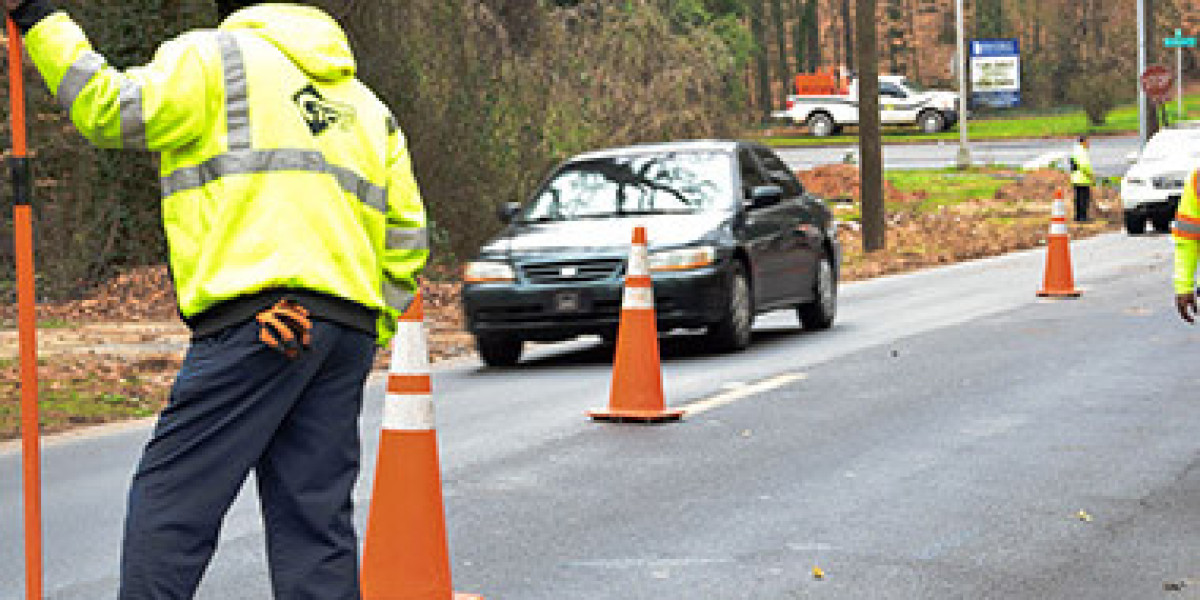Introduction
Traffic management is a critical component of modern infrastructure, aiming to ensure that roads operate smoothly and safely. Effective traffic management systems help reduce congestion, prevent accidents, and improve overall transportation efficiency. This article provides a comprehensive look at traffic management, including its strategies, technologies, and benefits. We will delve into how traffic management systems work, their importance, and the latest advancements in the field.
Chapter 1: Understanding Traffic Management
1.1 What is Traffic Management?
Traffic management refers to the planning, coordination, and control of transportation systems to ensure the safe and efficient movement of vehicles and pedestrians. It encompasses a range of strategies and technologies designed to optimize road use and minimize disruptions.
1.2 The Importance of Traffic Management
Effective traffic management is crucial for several reasons:
- Safety: Reduces the risk of accidents and enhances pedestrian safety.
- Efficiency: Improves traffic flow and reduces travel time.
- Environmental Impact: Decreases emissions by minimizing idling and congestion.
- Economic Benefits: Enhances productivity and reduces costs related to delays.
1.3 Key Objectives of Traffic Management
The primary objectives of traffic management include:
- Reducing Congestion: Implementing measures to prevent traffic jams and ensure smooth flow.
- Improving Safety: Ensuring that roads are safe for all users through effective controls and regulations.
- Enhancing Mobility: Facilitating easy and quick movement of people and goods.
- Promoting Sustainability: Reducing the environmental impact of transportation.
Chapter 2: Traffic Management Strategies
2.1 Traffic Control Devices
Traffic control devices are essential tools used to regulate and guide traffic. They include:
- Traffic Signals: Manage the flow of vehicles and pedestrians at intersections.
- Road Signs: Provide information and instructions to drivers.
- Traffic Lights: Control the movement of vehicles at intersections and pedestrian crossings.
2.2 Intelligent Transportation Systems (ITS)
ITS involves using technology to improve traffic management. Key components include:
- Traffic Cameras: Monitor traffic conditions in real time and assist in incident detection.
- Variable Message Signs (VMS): Display real-time information to drivers about traffic conditions, road closures, and hazards.
- Adaptive Traffic Signals: Adjust signal timings based on current traffic flow to reduce congestion.
2.3 Traffic Flow Management
Traffic flow management involves strategies to optimize the movement of vehicles. Techniques include:
- Ramp Metering: Controls the rate at which vehicles enter highways to prevent congestion.
- High Occupancy Vehicle (HOV) Lanes: Designated lanes for vehicles with multiple passengers to encourage carpooling and reduce traffic volume.
- Traffic Calming Measures: Includes speed bumps, roundabouts, and chicanes to slow down traffic and improve safety in residential areas.
2.4 Incident Management
Incident management focuses on quickly addressing accidents and other disruptions to minimize their impact on traffic. This includes:
- Emergency Response Plans: Coordinated efforts to manage traffic and respond to incidents effectively.
- Roadside Assistance: Providing support to stranded vehicles and clearing accidents swiftly.
- Real-Time Updates: Communicating information about incidents to drivers through various channels.
Chapter 3: Technologies in Traffic Management
3.1 Automated Traffic Management Systems
Automated systems use advanced technologies to manage traffic with minimal human intervention. Key technologies include:
- Traffic Management Software: Analyzes traffic data and provides insights for decision-making.
- Sensor Networks: Collect data on traffic volume, speed, and congestion.
- Machine Learning Algorithms: Predict traffic patterns and optimize traffic signal timings.
3.2 Smart Traffic Lights
Smart traffic lights adapt to real-time traffic conditions to improve flow and reduce delays. Features include:
- Dynamic Signal Timing: Adjusts the duration of green and red lights based on traffic volume.
- Traffic Detection Systems: Uses sensors to detect the presence of vehicles and pedestrians.
3.3 Connected Vehicles
Connected vehicle technology allows vehicles to communicate with each other and with traffic management systems. Benefits include:
- Real-Time Data Sharing: Vehicles share information about their speed, location, and direction.
- Enhanced Safety: Alerts drivers to potential hazards and improves collision avoidance.
Chapter 4: Traffic Management in Practice
4.1 Case Study: Owl Watch Security Services
Owl Watch Security Services offers premier traffic management solutions, demonstrating effective practices in the field. Their expertise includes:
- Traffic Flow Optimization: Ensuring smooth movement of vehicles in high-traffic areas.
- Safety Enhancements: Implementing measures to protect pedestrians and reduce accidents.
- Technology Integration: Utilizing advanced traffic management systems to monitor and control traffic effectively.
4.2 Traffic Management in Urban vs. Rural Areas
Traffic management strategies vary between urban and rural settings:
- Urban Areas: Focus on managing high traffic volumes, reducing congestion, and ensuring pedestrian safety.
- Rural Areas: Emphasize maintaining road quality, managing seasonal traffic variations, and ensuring safety on less-developed roads.
4.3 Future Trends in Traffic Management
The field of traffic management is evolving with advancements in technology. Future trends include:
- Autonomous Vehicles: Expected to transform traffic management by reducing human error and optimizing traffic flow.
- Smart Cities: Integrating traffic management with other urban systems to create more efficient and livable cities.
- Sustainable Practices: Emphasizing eco-friendly solutions and promoting alternative modes of transportation.
Chapter 5: Challenges and Solutions in Traffic Management
5.1 Common Challenges
Traffic management faces several challenges, including:
- Congestion: Increasing traffic volumes and inadequate infrastructure can lead to gridlock.
- Accidents: Ensuring safety and quick incident response.
- Technology Integration: Keeping up with rapid technological advancements and ensuring interoperability.
5.2 Solutions and Best Practices
To address these challenges, traffic management can implement:
- Comprehensive Planning: Developing long-term strategies for infrastructure and technology upgrades.
- Public Engagement: Involving the community in traffic management decisions and promoting awareness.
- Continuous Improvement: Regularly assessing and updating traffic management practices based on data and feedback.
Conclusion
Traffic management is a vital component of modern infrastructure that ensures safe, efficient, and sustainable transportation. By employing various strategies and leveraging advanced technologies, traffic management systems address the challenges of congestion, safety, and efficiency. With ongoing advancements and a focus on continuous improvement, traffic management will continue to play a crucial role in shaping the future of transportation. This comprehensive overview provides a deep understanding of traffic management, its practices, and its significance in our daily lives.
Chapter 6: Frequently Asked Questions (FAQs)
6.1 What is the purpose of traffic management?
Traffic management aims to ensure the safe and efficient movement of vehicles and pedestrians, reduce congestion, and enhance overall transportation systems.
6.2 How does traffic management improve safety?
Traffic management improves safety by implementing controls such as traffic signals, road signs, and traffic calming measures to prevent accidents and protect pedestrians.
6.3 What are Intelligent Transportation Systems (ITS)?
ITS are advanced technologies used to improve traffic management by providing real-time information, optimizing traffic signals, and enhancing overall transportation efficiency.
6.4 How does traffic management address congestion?
Traffic management addresses congestion through strategies such as adaptive signal control, ramp metering, and implementing HOV lanes to optimize traffic flow and reduce delays.
6.5 What role does technology play in traffic management?
Technology plays a crucial role in traffic management by providing tools for real-time monitoring, data analysis, and automated control systems to enhance traffic flow and safety.

